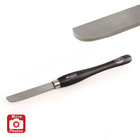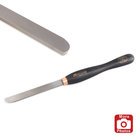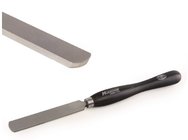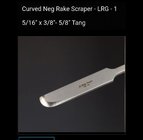Getting ready to drop some $$ on my first set of wood turning tools and I've got everything figured out except my scraper. I'm primarily interested in turning bowls and could use some advice on which one of these three I should get.
In order, the below pictures are:
1) Hurricane M2 Cryo 1" (x3/8") Heavy Duty Bowl Finishing Scraper....$114
2) Hurricane M42 Cryo 3/4" Bowl Finishing Scraper .......................................$82
3) Hurricane M2 Cryo 1" Round Nose Scraper ....................................................$76
At first I was thinking of getting the cheaper 1" round nose and grind / sharpen so that it has the profile of a bowl scraper. Is it ok to do this, or should I go for one of the other tools that are actual bowl scrapers? And if so, what's the advantage / functionality of the heavy duty scraper vs. the smaller 3/4" one?



In order, the below pictures are:
1) Hurricane M2 Cryo 1" (x3/8") Heavy Duty Bowl Finishing Scraper....$114
2) Hurricane M42 Cryo 3/4" Bowl Finishing Scraper .......................................$82
3) Hurricane M2 Cryo 1" Round Nose Scraper ....................................................$76
At first I was thinking of getting the cheaper 1" round nose and grind / sharpen so that it has the profile of a bowl scraper. Is it ok to do this, or should I go for one of the other tools that are actual bowl scrapers? And if so, what's the advantage / functionality of the heavy duty scraper vs. the smaller 3/4" one?




